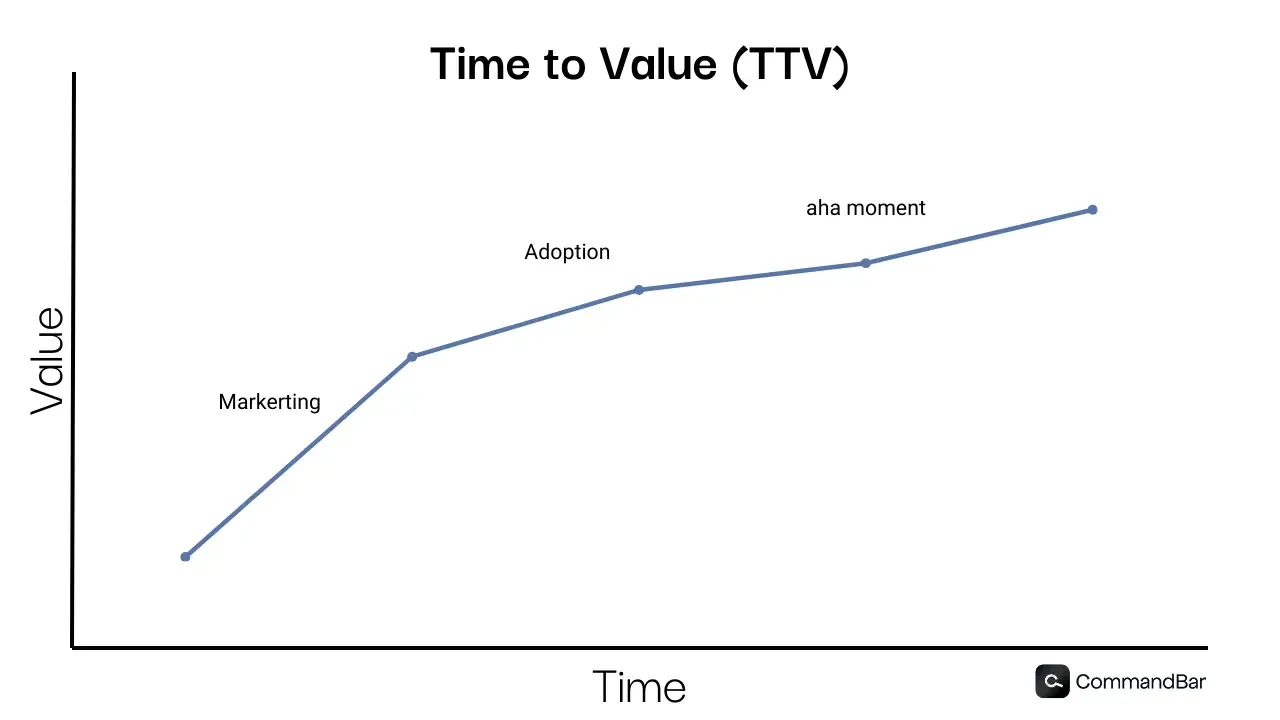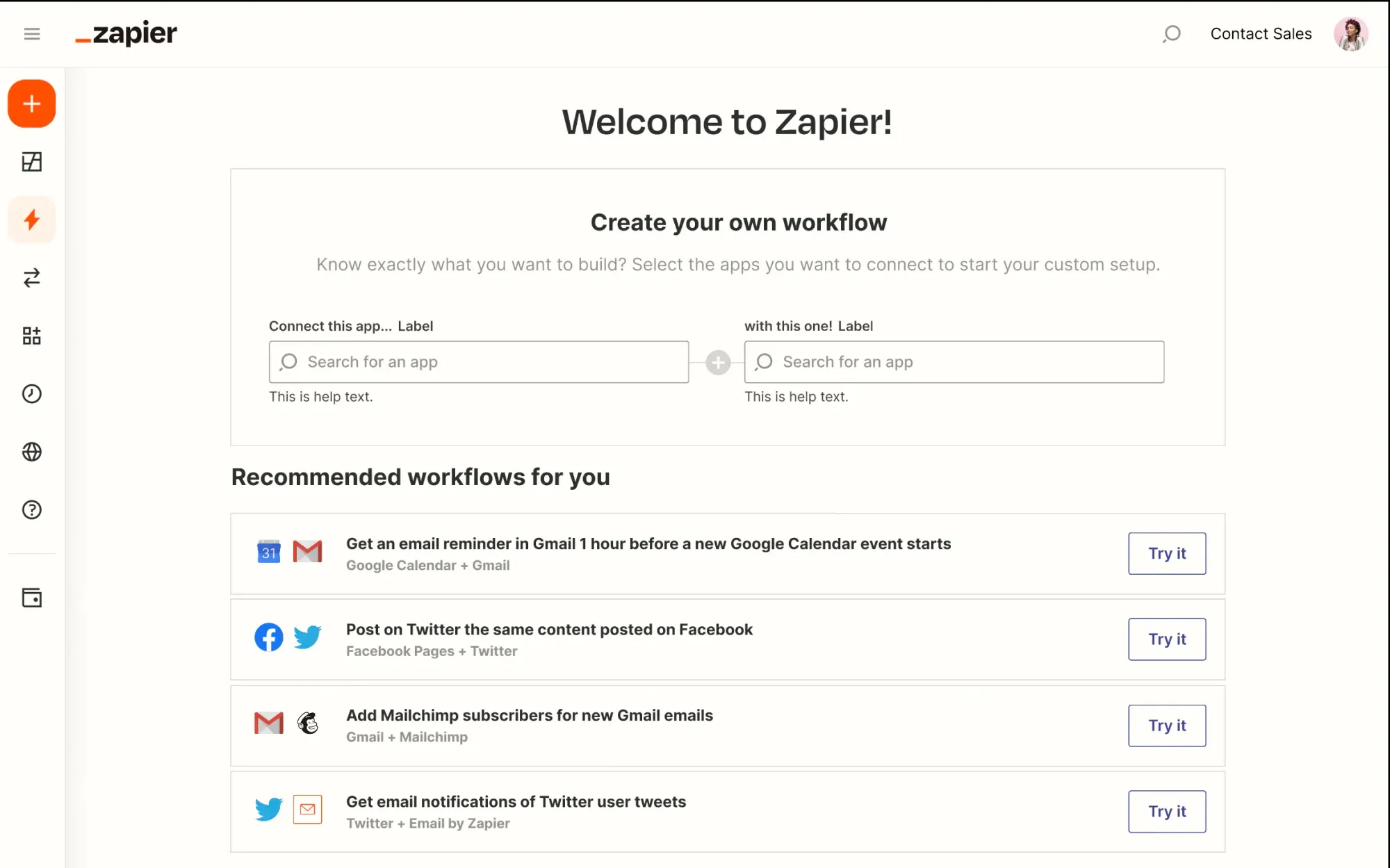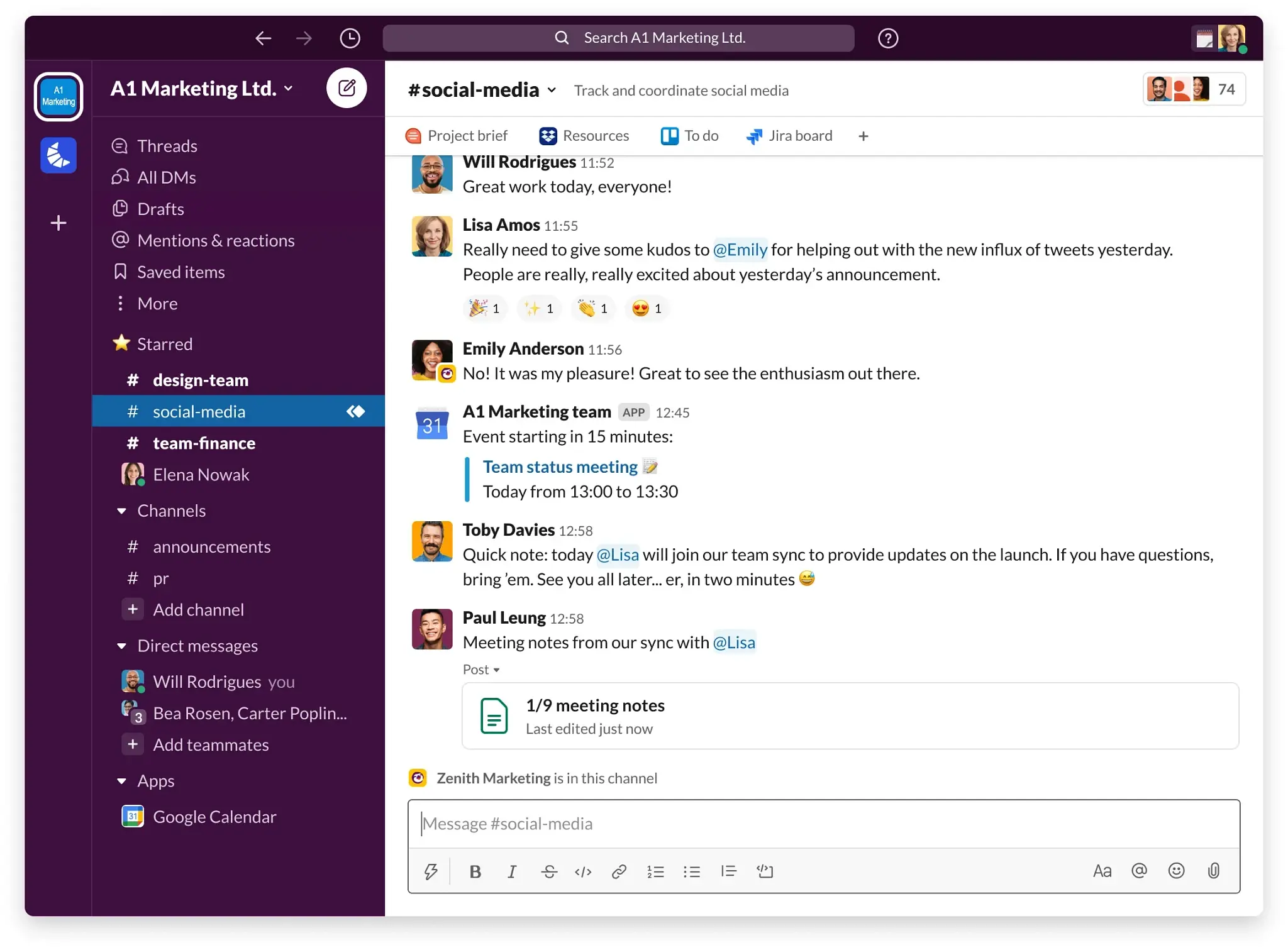What if I told you there was a single metric you could optimize for that would reduce churn, drive product adoption, and increase revenue?
Sounds too good to be true? Hold onto your hat! Not to bury the lead here, but Time to Value (TTV) is one of the most overlooked SaaS metrics. If you approach it correctly, Time to Value has the potential to align Product, Marketing, Growth, and Engineering teams like no other metric.
But there’s a catch.
Time to value is almost impossible to measure accurately (if at all). The great Peter Drucker famously said, “You can’t manage what you can’t measure.”. The cruel truth of this holy grail metric is that although it’s challenging to quantify Time to Value, I believe you should still try to do it anyway.
What is Time to Value (TTV)?
Time to Value is the amount of time it takes your customers to get value from your product or service. The clock starts ticking from the moment a user signs up for your product, and it ends when the user has experienced a significant return on investment (aka value). Some Time to Value metrics will be measured in minutes, others in years; it really does depend on the product.

Why is Time to Value important?
As the attention span and patience of humanity withers away to mere nanoseconds, it’s critical that you focus on speed and efficiency. If your product takes too long to deliver on value, users are likely to churn and find an alternative, so the best approach is to shorten the Time to Value as much as you possibly can.
The challenges of measuring Time to Value
As I alluded to in the introduction, accurately measuring Time to Value is almost impossible. This is primarily due to the disparity between qualitative and quantitative data.

When you’re combining both subjective and objective inputs, you’re bound to experience a convoluted mess of facts and assumptions. When you’re making product decisions, relying on murky data is typically a recipe for disaster, but that’s not entirely true when it comes to Time to Value.
How to define value
If we’re measuring how long it takes a user to get there, it makes sense to consider defining exactly what “value” is. After all, how will you know if your users hit a milestone if it isn’t defined? Therein lies the biggest hurdle in measuring Time to Value.
Sure, you can try to be pragmatic in attempting to define it:
- Understand and outline user needs
- Define your solution to their problem
- Establish what the success metrics are
But the truth is different users are going to perceive value differently depending on their needs, experiences, and expectations. For example, a productivity app will likely have a very different Time to Value metric for a small startup compared to a large Fortune 500 behemoth.
Limitation of SaaS metrics
While we’re all familiar with common SaaS metrics for insights into our product and users, they’re not necessarily reliable for measuring Time to Value. For example:
- Time-to-First-Key-Action: Considered critical for user engagement or product adoption but may not entirely reflective of the user’s realization of value.
- Feature Adoption Rate: How quickly users start using new features isn’t a proxy for value.
- User Onboarding Completion Rate: How fast a user gets up to speed with the product isn’t related to value realization.
- DAU, Login Frequency, or Session Duration: Consistent engagement doesn’t necessarily equate to value.
These metrics, among all the others, are obviously valuable, but even when combining them to paint a more contextual picture, they don’t directly measure how quickly and effectively users perceive and realize value.
Lagging indicators
Measuring Time to Value also relies heavily on lagging indicators like NPS scores and Churn rates. You need these metrics to supplement the more immediate feedback you find reflected in short-term metrics. The fluidity of these lagging indicators makes it challenging to pinpoint the initial moment or reasons why users didn’t find value in the product.
Examples of Time to Value in action
Zapier
The team at Zapier “look for people being able to set up a zap within their first 14 days,” according to Stephanie Donily, Head of Corporate Marketing. The implication on Time to Value here is a mix of two values, the first being activation and the second being time

The assumption is that if someone signs up for an account, creates a zap, turns it on, and runs it successfully within 14 days, they will have experienced the inherent value of the tool and stick around to create another zap. Stephanie also mentions that this “zap within 14 days” milestone isn’t uniquely specific to free or paid users.
Slack
We wrote about this in one of our previous blog posts on “aha moments,” but for the Slack team, hitting 2,000 messages in a workspace is the Time to Value metric worth tracking.

Now, you might think that’s a lot of messages, but surely users would perceive the platform to be valuable long before then, right?
This is a perfect example to highlight the challenge of measuring Time to Value.
Where an individual user might find value in instant messaging a team member in their very first interaction, a whole team in a larger organization likely won’t experience the same value until more time has passed and wider adoption across the team as a whole has taken place.
Airtable
Continuing along the tangent of individual vs team, like Slack, Airtable also tracks both user and workplace-level metrics to measure Time to Value. Thanks to a great anecdote from Airtable’s Head of Growth, Lauryn Isford, the metric they chase is “W4MUA (week 4 multi-user active) - at least 2 users working together in week 4”.
The implication here is that across their two key personas (builder and collaborator), there is a shared moment in time where the value is experienced across both the individual and workspace. The only remaining determining factor in measuring Time to Value in this scenario is complexity. If the project is simple, the time it takes to reach a point of value is going to be much quicker than if the project is more complex. This again highlights just how challenging it is to measure Time to Value accurately across your product; there are so many qualitative and quantitative variables to consider.
Optimizing an imperfect Time to Value metric is better than ignoring it
By this point, it’s pretty clear that accurately measuring Time to Value isn’t a walk in the park. For all intents and purposes, it’s albeit impossible to lock in a number. Instead of giving up and ignoring it, the best thing you can do is optimize for it regardless. Here’s why.
Time to Value is a fantastic directional metric.
Anything you do to reduce the time it takes to experience significant value from your product is going to naturally deliver net positive outcomes. For instance, if your business is not a SaaS provider and relies on physical deliveries, it is essential to optimize your delivery routes using Google Maps. This approach can enhance efficiency, reduce delivery times, and improve Time to Value metric.
Anything you do to reduce the time it takes to experience significant value from your product is going to naturally deliver net positive outcomes.
— Paul Thomson (@thepaulthomson) December 27, 2023
The best part about all this is that regardless of how you determine what “value” means to you and your users, making a concerted effort to reach that value in the most efficient and effortless way possible is going to reduce churn and spin up those growth flywheels.
How do you improve or reduce the Time to Value
There are plenty of tactics and strategies to help users experience value in your product faster:
- Product tours
- In-app guidance
- Nudges
- Tooltips
- Chatbots
- Help centers

With the right user assistance tools under your belt, the options to craft compelling onboarding experiences should become your number one priority. Focusing on where your users are churning, dropping off, or taking too long to achieve a realization of value is where I’d be looking to implement some of those tactics and strategies above.
Final thoughts
If you haven’t already drawn the dots, the punchline of this article is to move the goalposts from “measuring Time to Value” to “optimizing Time to Value.” Just like any other metric you’re tracking, it’s important to have an understanding of the broader context of where and how that metric relates to the growth and success of your company.
Time to Value is by far one of the most underrated metrics to optimize for if you want to reduce churn, improve product adoption, and increase your revenue.

















